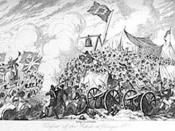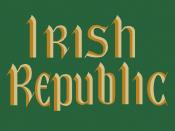'The Rising was a travesty of what it might have been but, perhaps because it was a travesty, triumph flowed from it.'
The Easter Rebellion, which began on Monday, April 14, 1916, was a crucial event in the history of the Irish Nation.
It had been years in the planning and only a few thousand men and women participated. The Rebellion was crushed by British forces in less than a week.
Despite its military failure, it can be judged as being an essential stepping-stone in the eventual creation of the Irish Republic. The rising was the most significant since the rebellion of 1798.
On the morning of Easter Monday, about 1,250 people started a rebellion. They set out to capture the most prominent buildings in Dublin. The General Post Office was now most associated with the rebels. However they failed to capture or even threaten probably the most important building in Dublin, the castle which served as the headquarters of the British administration in Ireland.
The British military onslaught, which the rebels had anticipated, did not at first happen. When the Rising began the authorities had just 400 troops to deal with about 1,000 insurgents. Their direct priorities were therefore to build up reinforcements, gather information on volunteer strength and locations and protect strategic positions, including the seat of government in Dublin Castle, which had initially been practically undefended
It is true that despite the failure it still achieved its long term plan of a Republic in Ireland. However it is also true is saying that the rebellion was a travesty, many soldiers were killed on both sides and many atrocities were committed by both sides.
The Rebellion had the prospective to achieve a lot although many flaws happened such as the German shipment being intercepted by the...


